New Westminster and the Homefront in WWII
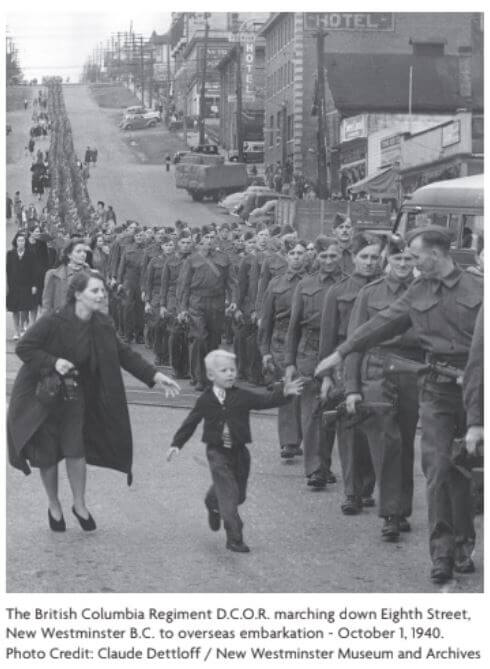
Heritage Homes Tour Marks VE Day Anniversary in New Westminster
This year’s Heritage Homes Tour theme, “On the Homefront,” commemorates the 80th anniversary of Victory in Europe (VE) Day – the end of World War II in Europe. Heritage researcher and bestselling author Jim Wolf recalls that time in our city’s history:
The end of Canada’s Great Depression in New Westminster came when war was ominously declared by Canada in support of Great Britain and France on September 10, 1939. New Westminster was ready and immediately the city seemed to buzz with activity and purpose as the war transformed people’s lives overnight. Women raided stores to buy everything they could before rationing was imposed. The number of marriages soared as sweethearts were forced to make quick decisions before men sailed overseas. By December the harbour was filled with the grey merchant ships of Great Britain that continued to load cargo in spite of the knowledge of the dangers awaiting them in the Atlantic.
Mobilizing for Battle: The Westminster Regiment
The Westminster Regiment had started training in earnest in 1938 and, with the declaration of war, was mobilized for active service. A military depot was required and the old Douglas Road cemetery at Eighth Street and Tenth Avenue (now the site of the high school and memorial park) was utilized and tombstones were moved out of the way to accommodate a new barracks facility. Soldiers were stationed and trained here before being issued their marching orders overseas or to another camp for specialized training. The 2nd Battalion of the Westminster Regiment was organized to perform its wartime duties of protecting the homefront with guards stationed at the barracks, the Queen's Park Reservoir, the Armoury, and the Railway Bridge.
The 1st Battalion of the Westminster Regiment immediately filled its ranks with a full strength of 1,000 men for overseas service. The regiment during its operations was said to have “never failed to take an objective and never yield a position to the enemy … their magnificent combination of courage, skill and leadership resulted in victories often against overwhelming odds and in extremely difficult circumstances.” Throughout the war only 3 men were taken prisoner. Their casualties were 467, of which 135 were killed in action or died from their wounds. More than 4,236 officers and men passed through the regiment’s ranks. It had a total time of service of six years and five months. Women too served an important role. In 1939 over 200 city women joined the local detachment of the B.C. Women’s Service Club to prepare for local emergencies and support the war effort. Other women left the city to join new women’s branches of the military services in addition to serving as nurses.
Community Support: Creating a 'Home Away from Home'
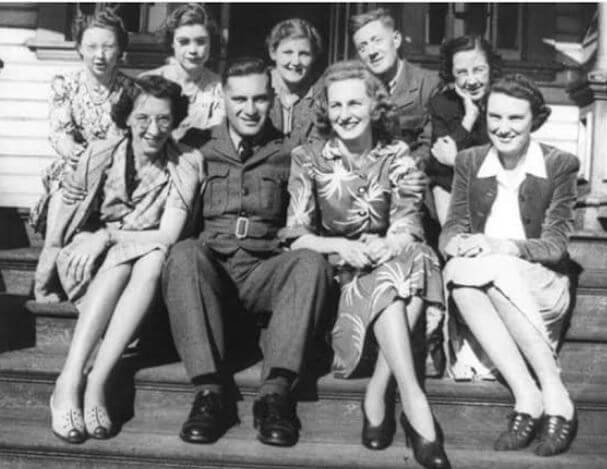
At home, citizens once again assisted the war effort with impressive results. One of the unique aspects of New Westminster during the war was that it became a temporary home to thousands of men stationed here from across the country undergoing training and awaiting for their transfer to other bases or overseas to the various battlefronts. The Soroptomist Club saw the need to create a “home away from home” for these men to spend their down time in a friendly setting away from the army camp and the bars of Columbia Street. The project, led by Janet Gilley and Dorothea McBride, the sister of the former premier, secured the old Galbraith mansion at Eighth Street and Queens Avenue. It was a city tax sale property earmarked for demolition, but the ladies worked their magic with council and the property was leased for this project.
Mayor Hume officiated at the opening of Westminster House in 1940, which was finely finished and decorated by volunteers with donations from the business community. One soldier wrote of the importance of this place: “To put into words what Westminster House is doing for the boys in the service is just about as impossible as an Axis victory, and the same applied to how much the boys appreciate their effort … At night you drop in and are practically surrounded by the most lovely girls, who will dance, sing, play cards or just sit and chat with you … for your entertainment … When we leave we will be taking fond memories with us. Instead of just thinking of home we will be thinking of home and Westminster House.”
Economic Shifts: Industry and Labour During Wartime
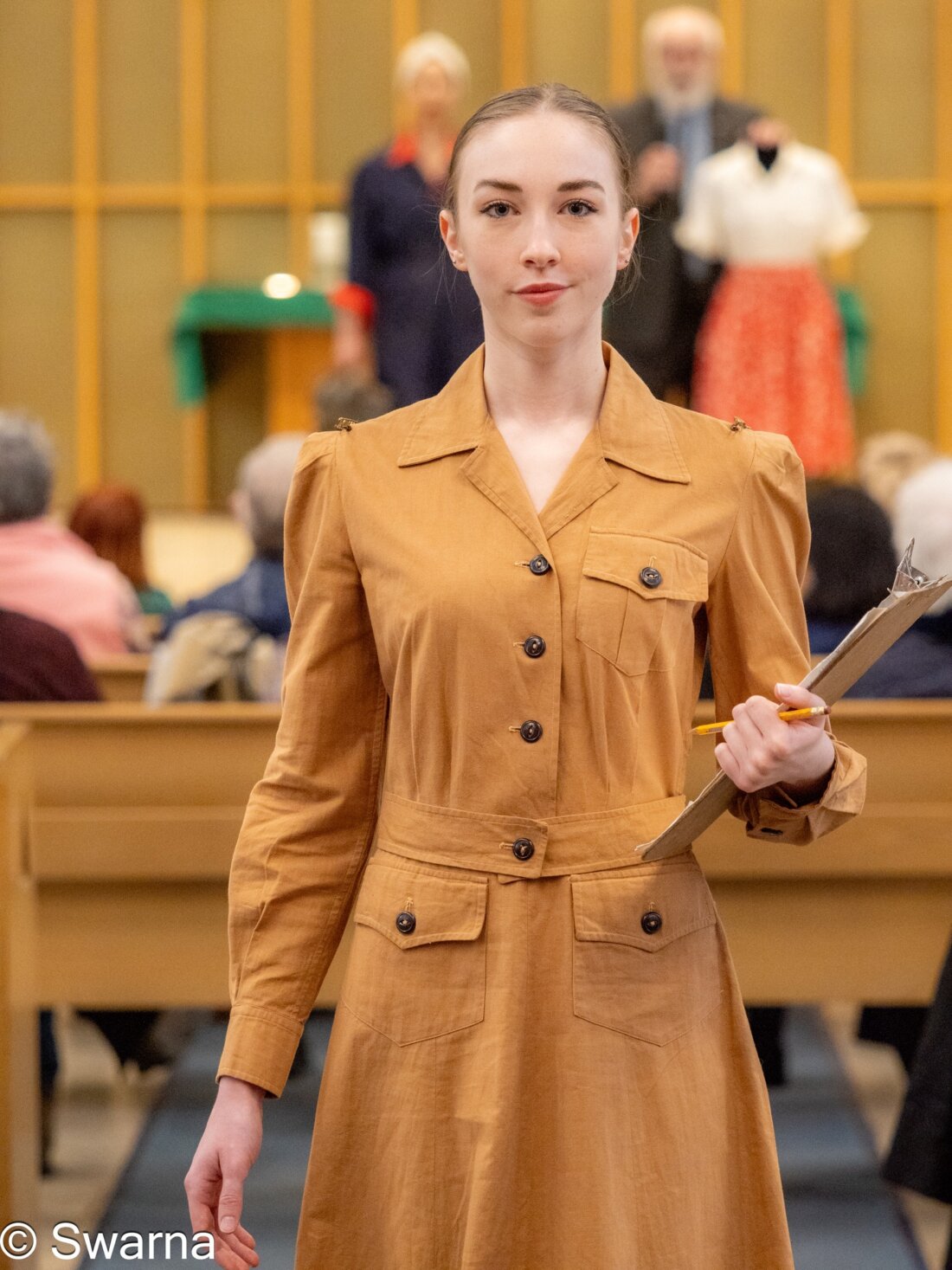
Industry boomed in the city but the port, after some initial activity, had all but shut down. The number of ships visiting port dropped from 511 in 1939 to only 89 in 1943. However, exports by rail grew as both war industry and Britain needed a continuous supply of B.C. lumber shipped by Atlantic convoy. New industry based on the war effort came to the city in the form of the Canadian Airlines plant and contracts to Mercer’s Star Shipyards, both located in Queensborough. Women donned overalls and turbans to work in the many plants throughout the city. The city’s population actually grew during the war to 25,000 by 1944 and once again old houses were renovated into apartments to serve the increased need.
Fear on the Pacific Coast: The Impact of Pearl Harbor
In 1941 the attack on Pearl Harbor brought the war to the Pacific coast and paranoia to British Columbia. Suddenly every town and city with a port felt extremely vulnerable, as the Western Air Command warned of imminent attack and ordered complete blackouts on December 8, 1941. New Westminster residents read front-page newspaper stories that enemy planes were spotted near San Franscisco. They prepared for Japanese bombs by following the blackout edict. The British Columbian reported:
… the order took many people by surprise and found them unprepared with the result that the black out was a progressive affair. Many were not listening to their radios when the order came … and in most cases the facilities for effectively shrouding windows was not available. City streetlights went out very soon after the order was given but the lights on the Pattullo Bridge remained on after that. The residential districts were at first a checkerboard of light and shade … By this time the A.R.P. wardens were moving about the Stygian gloom of the streets, going to illuminated houses and warning the occupants. Before seven o’clock, there were many cars moving about the darkened street without headlights, the drivers somehow feeling their way … Downtown on Columbia Street the neon signs still blazed. Between seven and eight they were extinguished … driving became extremely hazardous [and there were many accidents]. Across the river the lights went out very slowly but by 10 o’clock, viewed from the highest point of the west end, nothing could be seen but the blinker lights on the river … and away on the hillside in Surrey one lone light shone like a beacon.
A Dark Chapter: Japanese–Canadian Internment
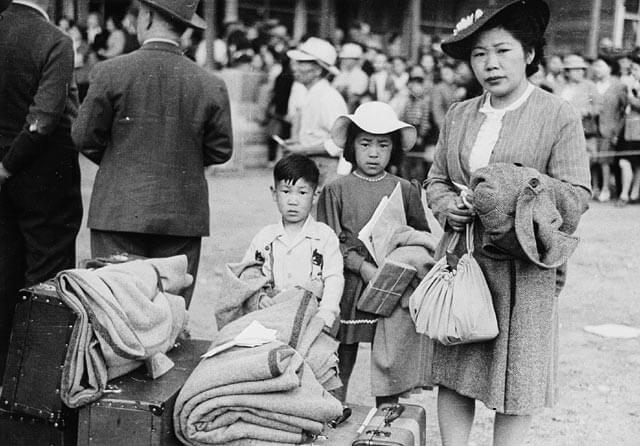
Japanese Canadians Being Relocated in BC, 1942
A family of Japanese Canadians being relocated in British Columbia, 1942. Library and Archives Canada/C-046355
The large Japanese–Canadian community of the Fraser Valley was immediately faced with a suspicious and hostile population and government. Branded "enemy aliens" in their own country, the passage of Orders-in-Council under the War Measures Act denied them their basic human rights. The Royal Canadian Navy working with the RCMP began to impound the 1,200 vessels in the Japanese–Canadian fishing fleet, with New Westminster’s harbour designated as one of the assembly points. The fishermen were forced to sail their boats into the harbour and turn them over to the government. The boats were moored at the Annieville dyke. Many of them sank over the winter and the remainder were sold in 1942.
In March 1942, the city’s entire Japanese–Canadian population was under orders for deportation to interior camps. Initially, they were ordered to surrender their automobiles and obey a curfew of being off the streets by sunset. The community consisted of 288 persons, according to the 1941 census, with 157 children attending city schools at the time. There were about 14 businesses owned by Japanese–Canadians, but the owners, hearing the news, were so shocked they did nothing to try and liquidate their stock. One business owner interviewed by The British Columbian said, “I feel like jumping off the Pattullo Bridge … but for the kids I might do it.” In April the first trains taking these families to Alberta and Manitoba to work in the sugar beet fields left from the city’s CPR station. These events mark one of the most tragic human rights violations in the history of Canada.
Victory and Reflection: Celebrating VE Day
The news of the end in Europe reached the city on the morning of May 8, 1945. Columbia Street was almost deserted until the arrival of high school students, who left their classes and formed long “snake” parades running through traffic around buses and in and out of the post office. Gradually, the crowd grew and stores hung bunting and flags while office workers threw clouds of shredded paper from windows. From somewhere in the snake line someone started singing and they were soon joined by a band that played “Roll out the Barrel,” “Over There,” “Hail Hail” and other marching songs. More somber recognition of the war’s end came at the impromptu gatherings at the cenotaph and in churches where people observed a moment of silence and reverence for the dead.
Soldiers began to arrive on the Pacific coast in preparation for further battles with Japan until there, too, the war came to a sudden and tragic end. Slowly the city’s men and women returned home. The largest celebration of the return of the Westminster Regiment came with the arrival of locomotive #2704 at the old CPR station on the evening of January 19, 1946, to a welcoming crowd of 20,000.
Homecoming: The Return of the Westminster Regiment
At eight-thirty the bell of the troop train was heard coming from Front Street. Slowly the train edged into view with members of the regiment standing on the steps and crowding the windows. They looked long and hard. They were home. Quickly and smoothly they disembarked from the train and formed up in the street. The crisp bark of CQMS Phil Abbott, Chilliwack, called “on parade” … Efficiency like this carried the Westminster Regiment through some of the toughest fighting on record, to emerge as one of the top fighting units of world war two. With the command from Lt. Col. Corbould the parade moved off [to Queen’s Park] to the tune of “Colonel Bogey” … on the last leg of the long trek that started four years ago.
The Westminsters marched into the oval under the moonlight as a faint mist rose from the chilled grass. They tramped to a patch of cold light cast by the floodlights before the platform as, from the dimness of the stands and from the masses who blanketed the corner of the field itself, there rose a roar from 5,000 throats that drowned the trumpets and even the skirl of the … pipe band … relatives had been herded into stands to sit behind family name letters and wait for the ranks to break. While the speeches were being staccatoed off, they swarmed over the field and the khaki ranks were drowned by civvies suits. With laughter and the tears of joy, wives, mothers and fathers and sweethearts were gathering to their arms the warriors who had returned.
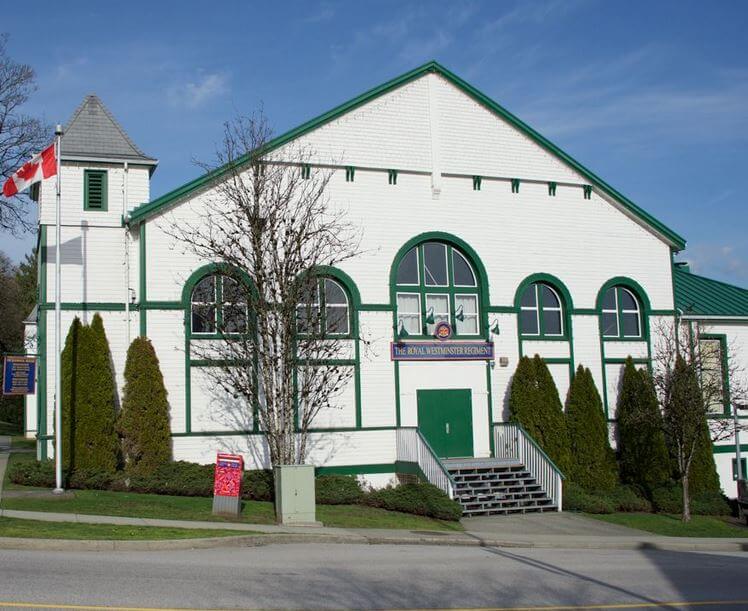
House C - The Armoury (1897) and the Royal Westminster Regiment Museum (1973)
Step into history at the Armoury, a featured stop on this year's "on the Homefront" tour. Discover the stories of New Westminster soldiers on display in the Drill Hall, explore powerful exhibits and artifacts at the Royal Westminster Regiment Museum - and enjoy refreshments from the bar, open in the Officers' Mess on Tour Day.
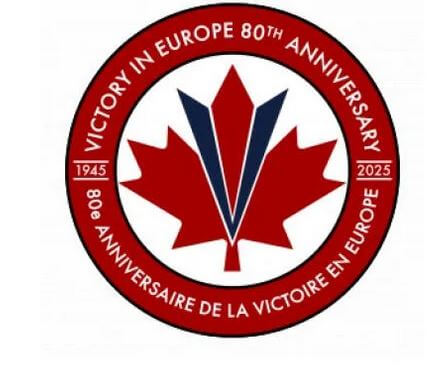
“On the Homefront,” this year’s theme for the New Westminster Heritage Homes Tour, commemorates the 80th anniversary of VE Day—the end of WWII in Europe—by sharing stories of those who served and highlighting the wartime roles of local homes and landmarks on this year’s tour.